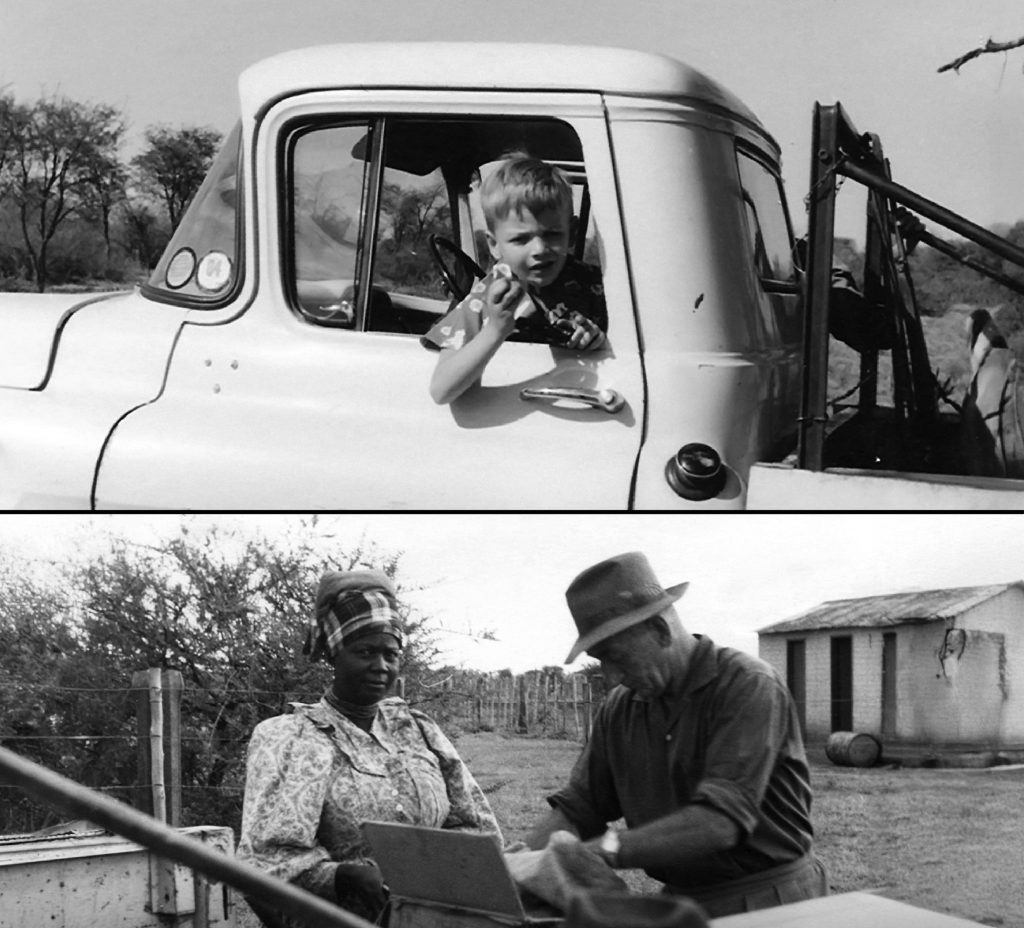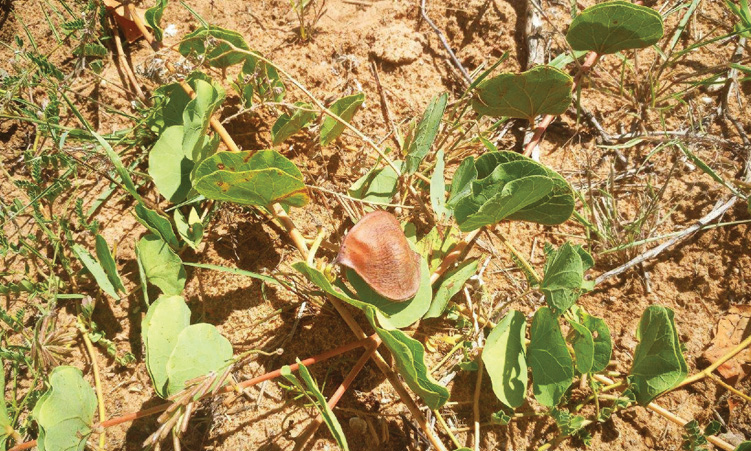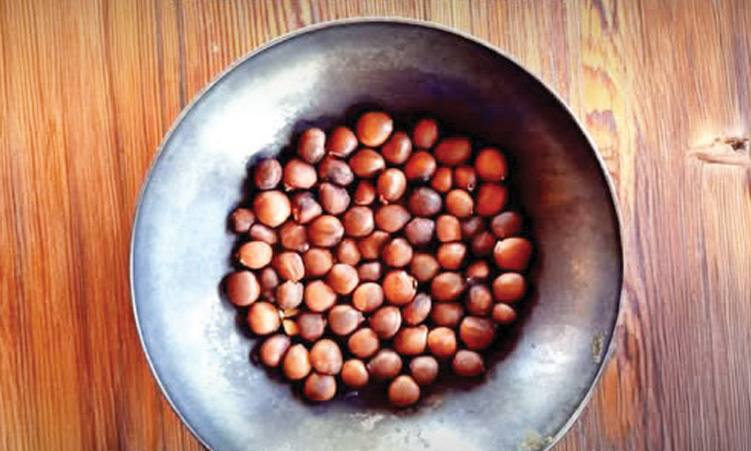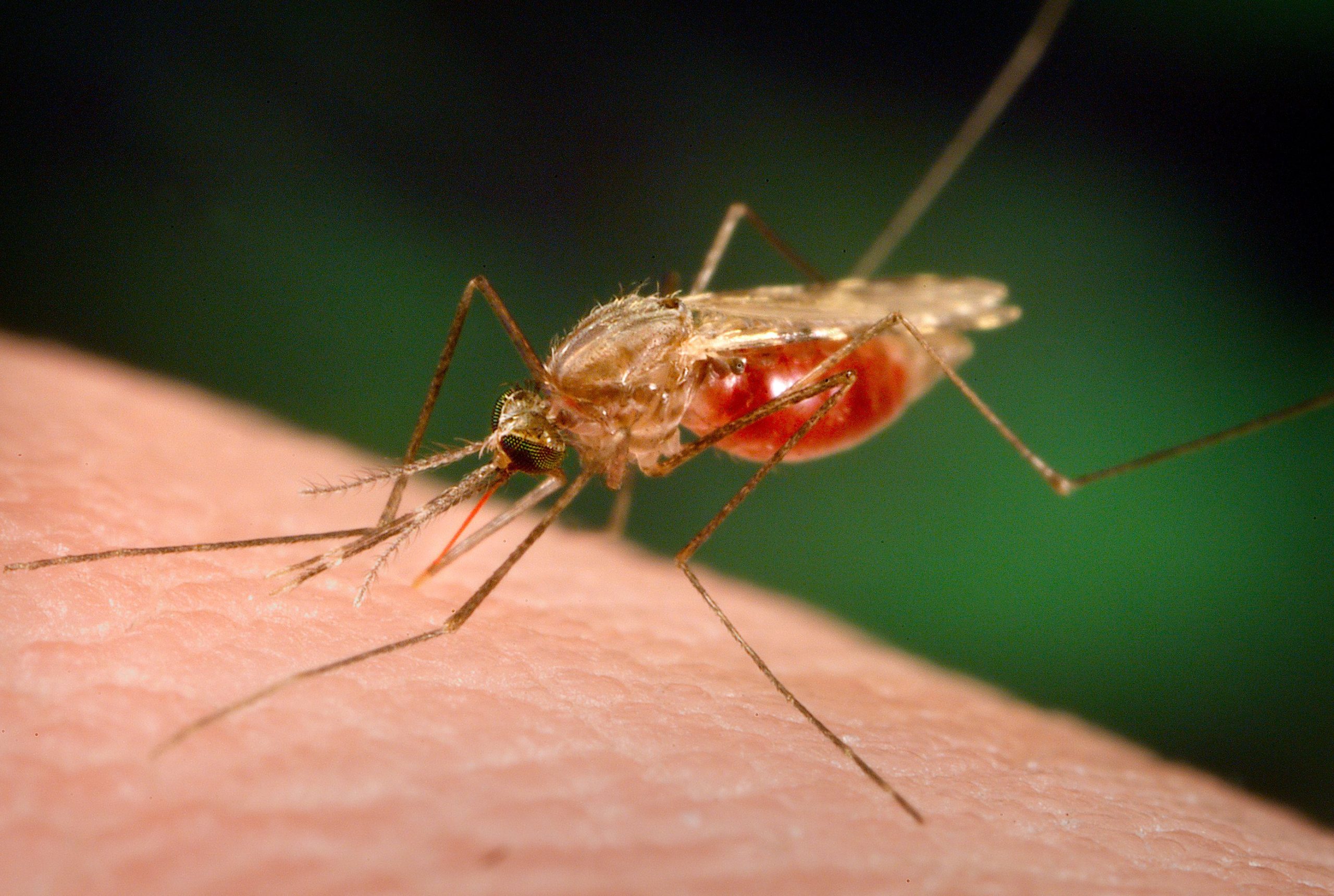This time of year, the ozombanuis start growing, peaking at Easter time. They bring back such strong childhood memories for me. You may well ask what ozombanuis are, and I’ll let you in on the secret. They are gemsbok beans, also known as morama/marama (Tswana), elandsboontjie/braaiboontjie/maramaboontjie (Afrikaans), maramama (Tsonga), cuxwe (Naro), tsi-tsin (!Kung) and gami (Khoi). I always remember them by their Otjiherero name, ozombanui. I can still feel the excitement of going out to the Omaheke as a young boy, collecting ozombanui and the appetising smell as they roasted in the fire.
In the drought of the early 1960s, my father bought a second farm in eastern Namibia, in Summerdown, to provide grazing for his cattle. I never wanted to go out there with him because he spent most of the time with the cattle – branding and dehorning, working on his windmill and delivering rations to his workers, and the day was long and uneventful for a small boy. The only time he was able to persuade me to go along was when it was ozombanui time. He knew I was mad for the beans, so he would softly say to me with a twinkle in his eye, “Why don’t you come out with me today Manni, it’s ozombanui time,” knowing that I would always jump at the offer.

Katrina, a Damara lady and the wife of the farm foreman, knowing my love for the large beans anticipated my arrival and sent her boys out collecting them. When I arrived, Katrina presented me with a ‘blik’ (container) full of ozombanui. How they made my mouth water and made a little boy’s heart smile. In exchange, I would bring them a gift of sweets, and we all enjoyed the friendly gift exchange.
Gemsbok beans are traditionally roasted in sand from the fire, after which then are peeled and eaten or pounded into a mash. They can also be boiled if sufficient water is available. Gemsbok beans also roast well in the oven like peanuts. But a word of caution, you have to keep your eye on them while they are roasting or else the whistling sounds of bullets exploding will soon call you to the oven as they burst out of their hard outer-casing.
A true fruit of the Kalahari, the gemsbok bean (scientific name Tylosema esculentum) is a nutritious perennial legume that is found in the sandy regions of Namibia, Botswana and South Africa. Rounded leaves grow along vines on the ground, nourished by an underground tuber. The bean is well known to the people of the Kalahari as a food source. A specific carpenter bee is the pollinator of the yellow flowers, which bloom in mid-summer. The large fruit pod, with its hard and woody outer shell, weighs 20-30 grams and houses two to three seeds or beans that when roasted are compared in flavour to a cashew, chestnut or slightly bitter edamame bean.
The beans have a high protein content that is comparable to soybeans and they are rich in unsaturated fatty acids and micronutrients. Some refer to the gemsbok bean as an underutilised crop that could potentially be commercialised, as the beans can also be ground into a flour or made into a milk.
Besides the gemsbok bean being a delicious ‘veldkos’ (bush food) that grows in the harsher climes of southern Africa, the leaves are eaten by wildlife and domestic animals, providing nourishment in arid areas where there is little else available.
In a month or two, I’ll start looking out for people collecting them along the roadside in the Omaheke. I look forward to roasting them on the fire and relishing these generous gifts from the earth.


Stay informed with The Namibian – your source for credible journalism. Get in-depth reporting and opinions for
only N$85 a month. Invest in journalism, invest in democracy –
Subscribe Now!










